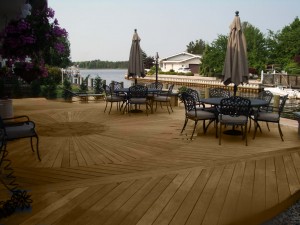
Certainly, we have found that Cumaru is a great Ipe alternative, and we have been selling it as fast as we can stock it for several years now.
Recently, in order to beef up our selection of decking options, we started stocking Jatoba decking in 5/4×6 and a wide variety of lengths. So how does Jatoba compare to Ipe, and why should someone choose Jatoba or Ipe?
Ipe Hardness and Other Technical Specifications
There are a lot of technical numbers and units of measure that could be thrown around, but when it comes to a decking product, I find there are really just 4 things to consider. The numbers by themselves really don’t tell you much, but when taken in comparison to another species, they start to take on meaning. This is especially true when you have first hand working experience with a species and can start there.
1. Hardness
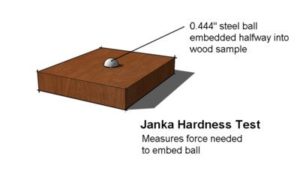 This is important for obvious reasons, since your deck will be getting lots of foot traffic from humans and animals alike at your holiday BBQ. I don’t know about you, but my dog alone can put a deck to the test! Your steel tipped snow shovel will test the decking boards in the winter months as well.
This is important for obvious reasons, since your deck will be getting lots of foot traffic from humans and animals alike at your holiday BBQ. I don’t know about you, but my dog alone can put a deck to the test! Your steel tipped snow shovel will test the decking boards in the winter months as well.
The hardness of a board is determined by the Janka test, when a steel ball approximately 1/2″ in diameter is pushed into the face grain of the board approximately 1/2″ deep. The rating you see listed in wood charts is the measurement of the force required.
- Ipe Hardness: 3684
- Jatoba Hardness: 2690
Ipe is one of the hardest woods around, and when it comes to typical decking species, it is the reigning champion of the hardness test. So when you look at Jatoba vs Ipe, you discover that Jatoba is 25% softer. Though even at 2690, Jatoba is still ridiculously hard. Compare Jatoba to another common decking wood like Western Red Cedar (330) or Pressure Treated Pine (690), and you will see that Jatoba is 4-8 times harder. In this area I think it is safe to say that both species will stand up to your decking traffic and the occasional herd of elephants (you never know).
2. Stiffness
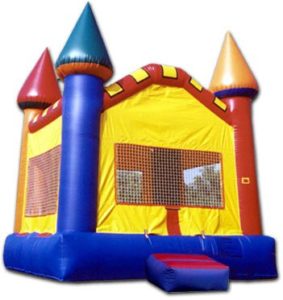
This is also sometimes called Modulus of Elasticity (MOE), and it is measured in pounds per square inch. When it comes to decking, what we are really talking about is how much the boards will flex under foot between the joists. This is a big deal when it comes to deciding the spacing for the structure underneath. Unless the moon bounce feel is what you are going for with your deck, then a stiff board is a requirement.
- Ipe: 3129
- Jatoba: 2745
Ipe once again comes out as the stiffer species at almost 15% higher. But again I have to question whether this really makes a difference in reality. The design values tell me that I could install Ipe on 24″ centers without the bounce, and I should shoot for something like 16″ centers for the Jatoba.
But who really builds a deck with 24″ joist spacing? The 16″ number has become pretty standard, and some deck builders are even going to 12″ spacing now to be doubly sure that bounce won’t creep into the deck. This may be spawned by the majority of softwood decks out there that develop that bounce over time. With the penchant for tighter joist spacing, the stiffer boards just seem like overkill. So while Ipe is the winner on paper, it is best to call it a dead heat practically.
3. Weight
I don’t think I need to explain this one do I?
- Ipe: 62 lbs/ft<sup3
- Jatoba: 57 lbs/ft3
Once your deck is installed, this doesn’t make much difference – assuming the loads were taken into consideration during the design of the deck. The point to consider weight is during the construction. If you are shipping in the material, your costs can rise pretty quickly, and even though there is only 5 lbs difference between Ipe and Jatoba, imagine how quickly that will add up over a 1000 square foot deck. If your deck project is in a tough spot or not accessible by delivery truck, recognize that you will have to move all that weight by hand. So Jatoba wins this duel and will probably save you some money on freight just getting it to the job site.
4. Stability
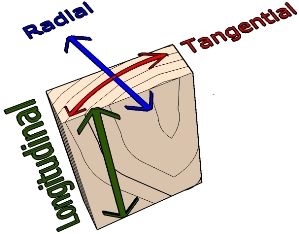
- Ipe: Tangential: 8%, Radial: 7%
- Jatoba: Tangential: 7.1%, Radial: 3.8%
Ipe is often touted as a very stable species, and when you look at the numbers, the ratio of tangential to radial movement is 1.1 as compared to Jatoba’s 1.9. In other words Ipe is almost isotropic and moves equally in all directions.
However, it isn’t so much the varying movement in different directions, but the varying moisture content from one face of a board to another that causes problems. When one face gets baked in the sun while the opposite is shaded, or one face is wet with rain while the other is dry, the board will cup due to the variance in moisture content within the same grain plane. So just examining the percentage of movement is a recipe for error.
On paper, Ipe looks like it would be more stable, and lets be real: Ipe is a really stable wood. However, we have found Jatoba to exhibit less cupping when exposed to the elements, because of its slightly lower density. Less density means more empty space between the cells and, therefore, more elasticity when one side of the board tries to shrink or expand differently from the other face.
So when you consider that stability to the deck owner is the equivalent of boards that lie flat under all conditions, a little elasticity would make Jatoba win this round. I think the biggest issue for success with a deck is proper installation. With proper spacing and ventilation beneath the deck, either species will perform extremely well.
Ipe Decking Cost Comparison vs Jatoba Decking
Looking at the technical specifications essentially places Ipe and Jatoba on even footing. In many ways this is a good thing, because Ipe has a long and stellar reputation as a decking species. Knowing that Jatoba stacks up to it means one can feel comfortable with the decision to go with Jatoba on their next deck. So while we are still selling Ipe in droves and will continue to sell it, for the customer willing to consider Jatoba, consider this:
- Jatoba can be almost 30% cheaper than Ipe
- Jatoba is more available than Ipe due to lower demand
- Jatoba is also a very popular interior flooring species, so supply pipelines are strong, and the blending of inside and outside spaces is possible.
On the flip side of this equation, however, is the challenge that availability of sizes in Jatoba is severely limited. We carry a full range of Ipe sizes from decking boards, to balusters, railing, stringers, joists, and posts. But we only carry 5/4×6 decking boards in Jatoba. If you want to build your deck solely of one species, then Jatoba is not your solution.
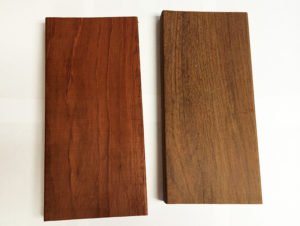
Truly, the performance of these species is so close, that sometimes, it just comes down to the superficial. How do you want your deck to look? Eventually, without annual treatment, all woods will turn a silvery gray outside.
If maintaining the original look is your aim, then you need to decide if you want a brownish red or a deep red color to your deck. Both are beautiful and both are really hard and durable. Sometimes, it just comes down to the look, and in this case, Jatoba Decking and Ipe are virtually equal in every other aspect, so let your sense of style be your guide.

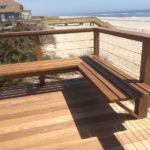
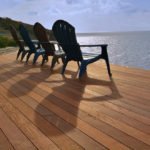
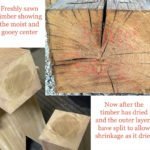
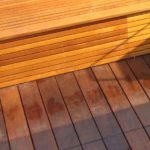
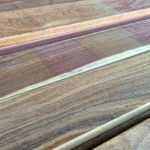
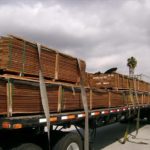


Thanks! Great article comparing Ipe’ and Jatoba decking. Good to hear from the lumber supplier end of the spectrum.